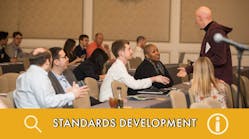PNNL adds third SSL Living Lab, publishes three resources (UPDATED)
Pacific Northwest National Laboratory (PNNL), a research organization associated with the US Department of Energy (DOE), has announced the creation of a third Living Laboratory associated with the Next Generation Lighting Systems (NGLS) program. A full floor installation of connected solid-state lighting (SSL) at the Northwest Energy Efficiency Alliance (NEEA) headquarters in Portland, OR will enable real-time study of connected LED-based systems. Meanwhile, the PNNL organization has announced three new research reports related to connected lighting on behalf of the DOE.
PNNL has been pursuing the Living Labs strategy for several years now. We first learned of the work at Strategies in Light 2019. More recently in the summer of 2020, experts from PNNL described the research ongoing in an indoor lighting setting at Parsons, The New School, in New York City, and an outdoor lighting setting at the Virginia Polytechnic University in Blacksburg, VA. Now the Portland Living Lab provides the organization a specific location for studying connectivity issues indoors.
The NEEA program encompasses a 13,000-ft2 space populated with products supplied by commercial vendors who responded to an RFI process that took place this past summer. Indeed, the significance of using off-the-shelf products can’t be understated as lighting contractors, designers, specifiers, consultants, and more will be challenged with using such products and making interoperable products work together.
The focus on the Living Labs is exploring the gap between vendor product specifications and the reality of the situation in the field. “I think we are changing the industry with research that will provide a much better occupant experience and save money in both installation costs and operation costs,” said Mike Gershowitz, vice president of solutions engineering at Enlighted Inc. “Our work with NGLS at NEEA will be a win-win all around — people will get a better result at a better price point and occupants will be better for it.”
Concurrently with the announcement of the new facility at NEEA, PNNL also announced the release of three new publications, all with some link to connected SSL. Note that the DOE in better-funded times got news of such new data to the public much more quickly. Theses days such news often goes unreported or is delayed significantly.
You can find details of the new resources on the DOE SSL website. One report is dated in March and focuses on the impact of wall-based controls in connected lighting. The data includes information on installing such controls, notes configuration challenges, and makes conclusions on where wall controls stand.
In May, the DOE released a report on the observation methods and evaluation strategies that NGLS is using in studying connected lighting. And the third report that is dated from July explores the communication channels that vendors of connected lighting are utilizing in conversing about projects with installers.
We’d also note that the NGLS Living Labs program is not the only learning resource attributable to PNNL or other industry resources. Back in 2017, we reported about a Living Laboratory project undertaken by researchers at the DOE’s Lawrence Berkeley National laboratory involving a 40,000-ft2 space in New York.
The DOE has further undertaken numerous programs focused on learnings surrounding SSL systems. Earlier this year, the DOE worked with the Illuminating Engineering Society to host a virtual Lighting R&D Workshop. The program summarized the various programs that the DOE and PNNL have undertaken relative to SSL and connectivity. Moreover, we published a blog post that contemplated insights on the problem at hand and specifically how gathered data was being used to guide the future of building design and operation.
LEDs Magazine chief editor MAURY WRIGHT is an electronics engineer turned technology journalist, who has focused specifically on the LED & Lighting industry for the past decade.
*Updated Nov. 18, 2021 1:15 PM for NEEA name correction. LEDs Magazine regrets the error.
>> Sign up for the Smart Buildings Technology magazine and newsletter if you’d like to be updated on integrating security, HVAC, lighting, networking, and cabling systems for smart enterprises.
For up-to-the-minute LED and SSL updates, why not follow us on Twitter? You’ll find curated content and commentary, as well as information on industry events, webcasts, and surveys on our LinkedIn Company Page and our Facebook page.

Maury Wright | Editor in Chief
Maury Wright is an electronics engineer turned technology journalist, who has focused specifically on the LED & Lighting industry for the past decade. Wright first wrote for LEDs Magazine as a contractor in 2010, and took over as Editor-in-Chief in 2012. He has broad experience in technology areas ranging from microprocessors to digital media to wireless networks that he gained over 30 years in the trade press. Wright has experience running global editorial operations, such as during his tenure as worldwide editorial director of EDN Magazine, and has been instrumental in launching publication websites going back to the earliest days of the Internet. Wright has won numerous industry awards, including multiple ASBPE national awards for B2B journalism excellence, and has received finalist recognition for LEDs Magazine in the FOLIO Eddie Awards. He received a BS in electrical engineering from Auburn University.





